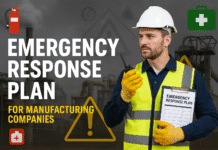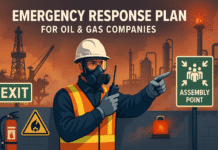
Bloodborne Pathogens: Exposure Control and Training
Introduction
In various occupational settings, the risk of exposure to bloodborne pathogens poses a significant threat to the health and safety of workers. This article delves into the importance of implementing exposure control measures and providing comprehensive training to minimize the risks associated with bloodborne pathogens in the workplace.
Exposure Control Measures
- Implementation of Standard Precautions
- Adopting standard precautions as the baseline for infection control
- Treating all blood and potentially infectious materials as if they are contaminated to minimize the risk of exposure
- Engineering Controls
- Utilizing engineering controls to prevent or minimize exposure
- Implementing safer medical devices, such as needleless systems and sharps disposal containers, to reduce the risk of injuries and contamination
- Personal Protective Equipment (PPE)
- Providing and ensuring the proper use of PPE, including gloves, gowns, masks, and eye protection
- Creating a barrier between workers and bloodborne pathogens to prevent direct contact and exposure
- Safe Work Practices
- Establishing and enforcing safe work practices for handling blood and infectious materials
- Emphasizing proper hand hygiene, disposal procedures, and decontamination processes to mitigate the risk of exposure
- Administrative Controls
- Implementing administrative controls to minimize exposure risks
- Developing and enforcing policies, procedures, and protocols that prioritize the safety of workers and reduce the likelihood of exposure incidents
- Vaccination Programs
- Offering vaccination programs for bloodborne pathogens such as Hepatitis B
- Providing employees with the opportunity to receive vaccinations to protect against potential infections
- Post-Exposure Evaluation and Follow-Up
- Establishing procedures for post-exposure evaluation and follow-up
- Ensuring that employees who experience potential exposure incidents receive timely medical evaluation and necessary follow-up care
Comprehensive Training Programs
- Education on Bloodborne Pathogens
- Providing comprehensive education on bloodborne pathogens
- Ensuring that employees understand the risks, transmission routes, and preventive measures associated with bloodborne pathogens
- Proper Use of PPE
- Conducting training on the proper selection, use, and disposal of PPE
- Empowering workers to use protective equipment effectively to reduce the risk of exposure
- Handling and Disposal Procedures
- Training employees on safe handling and disposal procedures for blood and infectious materials
- Emphasizing proper labeling, containment, and disposal to prevent contamination
- Emergency Response Training
- Conducting emergency response training for potential exposure incidents
- Equipping employees with the knowledge and skills to respond swiftly and appropriately in case of accidental exposure
- Periodic Refresher Training
- Implementing periodic refresher training sessions
- Keeping employees informed about updates in protocols, new technologies, and best practices in bloodborne pathogen prevention
- Communication of Exposure Risks
- Establishing clear communication channels regarding exposure risks
- Ensuring that employees are aware of the specific bloodborne pathogens present in their workplace and the associated risks
- Promotion of a Culture of Safety
- Fostering a culture of safety through continuous training and communication
- Encouraging active participation in infection control practices and creating a workplace environment where safety is prioritized
Conclusion
In conclusion, safeguarding workers from the risks of bloodborne pathogens requires a combination of robust exposure control measures and comprehensive training programs. Implementing standard precautions, utilizing engineering controls, and providing adequate PPE are crucial steps in minimizing the risk of exposure. Simultaneously, educating employees, conducting regular training sessions, and fostering a culture of safety contribute to a workplace environment where the threat of bloodborne pathogen exposure is effectively managed.
Risk Assessment and Hazard Identification: A Key Responsibility for Safety Officers
Personal Protective Equipment (PPE): Selection, Usage, and Maintenance for Safety Officers
Work Management System (WMS) in ADNOC
Job Performer Responsibilities
Frequently Asked Questions (FAQs)
- Why is the implementation of standard precautions important for bloodborne pathogen prevention?
- Standard precautions serve as the baseline for infection control, treating all blood and potentially infectious materials as if they are contaminated. This approach minimizes the risk of exposure to bloodborne pathogens.
- How do engineering controls contribute to bloodborne pathogen prevention?
- Engineering controls, such as needleless systems and sharps disposal containers, help prevent or minimize exposure to bloodborne pathogens by implementing safer medical devices and disposal methods, reducing the risk of injuries and contamination.
- What is the role of personal protective equipment (PPE) in bloodborne pathogen prevention?
- PPE, including gloves, gowns, masks, and eye protection, creates a barrier between workers and bloodborne pathogens, preventing direct contact and exposure. Proper use of PPE is crucial for minimizing the risk of infection.
- Why is vaccination against Hepatitis B included in exposure control measures?
- Vaccination against Hepatitis B is included to protect employees from potential infections. Offering vaccination programs ensures that workers have the opportunity to receive protection against this bloodborne pathogen.
- How does emergency response training contribute to bloodborne pathogen prevention?
- Emergency response training equips employees with the knowledge and skills to respond swiftly and appropriately in case of accidental exposure to bloodborne pathogens. This training is crucial for minimizing the impact of exposure incidents.
























